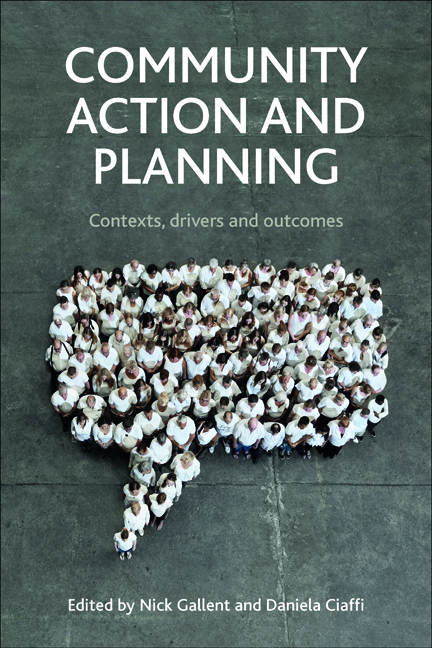2 - Communities, networks and social capital
Published online by Cambridge University Press: 04 March 2022
Summary
Introduction
The last chapter explored the promise and challenges of community planning and made it clear that collective action to shape neighbourhoods cannot be taken for granted. There is a key issue involved: enabling the dynamics by which a group of people come together to develop and implement a vision for their locality. This chapter uses the concepts of networks and social capital to understand these dynamics more fully. It begins by building on the discussion of the previous chapter on the nature of communities. It then considers communities as networks and explores the concept of social capital. It looks at how to define the concept, the different ways in which social capital generates impacts (positive and negative) and, finally, the factors that can help shape social capital and those impacts.
Communities: definitions and assumptions
The idea of community action and planning presupposes the existence of communities. As the previous chapter explored, however, the question of what constitutes a community is a difficult one to tackle. The term ‘community’ is widely used these days. We talk of workingor middle-class communities, ethnic communities, online or virtual communities and business communities. There are, however, three notable features about the way the term is used, particularly within community planning debates.
First, there is often a strong normative dimension. Communities are generally seen as good things. The term suggests continuity, stability and possibly a degree of nostalgia. This is particularly evident in the media with television and radio soaps across the world built around self-described communities of people, organised into families and friends who know each other and each other's business. Certainly the community planning movement and localism agenda use the term positively to suggest that plan-making and decision-making based within communities will result in better outcomes.
Second, communities are often strongly identified with particular localities. This is certainly the case in those TV and radio soaps with their emphases on the historic ‘East End’ of London, mythical English Ambridge or sunny Australian Erinsborough. It is also apparent in planning debates, where there is a tendency to emphasise spatial communities, fixing them in specific geographical areas and giving them associated identities.
Information
- Type
- Chapter
- Information
- Community Action and PlanningContexts, Drivers and Outcomes, pp. 21 - 40Publisher: Bristol University PressPrint publication year: 2014
